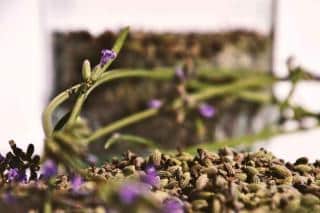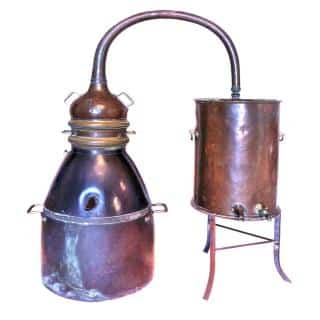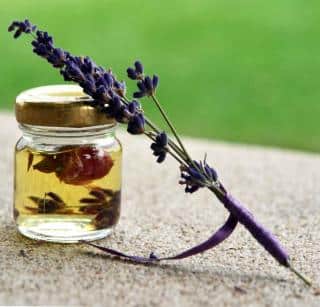

Lavender oil is a famous liniment. It’s used in perfume and to heal small ailments. There are two ways to make oil from lavender:
Both methods extract lavender oil, though the resulting product is different for each.
Lavender flowers are strongly scented. For over a hundred years, people have been growing lavender mainly for the fragrance that’s in the violet blooms.
Essential oil of lavender is obtained through steam distillation. It’s the most concentrated type of lavender oil. Producing it requires specialized equipment but some DIY solutions with kitchen utensils already yield a satisfactory result. You need to dilute such oils before use, they’re so concentrated!
 The easiest way to extract the scent and benefits of lavender flowers is to infuse lavender flowers in a “carrier” oil. This means that the flowers are steeped or soaked in oil from another plant. The lavender scent isn’t as strong as with essential oil, but the advantage is that you can use it directly, without diluting it.
The easiest way to extract the scent and benefits of lavender flowers is to infuse lavender flowers in a “carrier” oil. This means that the flowers are steeped or soaked in oil from another plant. The lavender scent isn’t as strong as with essential oil, but the advantage is that you can use it directly, without diluting it.
Usually, scent-less oils are used, but it’s also possible to associate two fragrances together to make a liniment, like adding a lavender scent to coconut oil. Additionally, you get the benefits of the carrier oil along with those of lavender, too.
The process to extract lavender essential oil is steam distillation. Usually, lavandin is used since it produces up to ten times more essential oils than other varieties. It’s usually propagated through cuttings to ensure 100% replication of the mother plant’s characteristics. Next best is Old English lavender and Portuguese lavender , whereas French lavender ranks among the lower-producing varieties.
Distilling lavender to produce oil requires four main tools:
 a source of heat to steam the flowers in a large vat, called a Still.
a source of heat to steam the flowers in a large vat, called a Still.Sometimes the still, swan neck, and condenser are combined. This is then called an Alembic.
This technique is ancient, since even in Ancient times lavender extracts were prepared with steam.
→ These same tools work for other plants, too: damask roses, atlas cedar…
It takes a lot of lavender to get a little bit of essential oil. Depending on the variety, in the worst case you’ll need about 30kg of lavender flowers to extract 100 ml of essential oil. Lavandin varieties offer the highest productivity, whereas other types of lavender yield less.
An easier way to reap the health benefits of lavender oil is to infuse a “carrier” oil with lavender flowers. Oils from the lavender flowers will seep into the carrier oil.
Oils that will carry the lavender extracts are your choice. Many like to use olive oil or virgin coconut oil to add their health benefits to the preparation. Other less fragrant oils like argan oil, almond oil, or shea oil will let the lavender scent dominate instead.
 1- Pick lavender flowers. You’ll get slightly different results with very fresh flowers than with older dried ones.
1- Pick lavender flowers. You’ll get slightly different results with very fresh flowers than with older dried ones.These two different oils – essential lavender oil and oil infused with lavender – have several different uses. Discover them along with other lavender benefits here (here for lavandin).